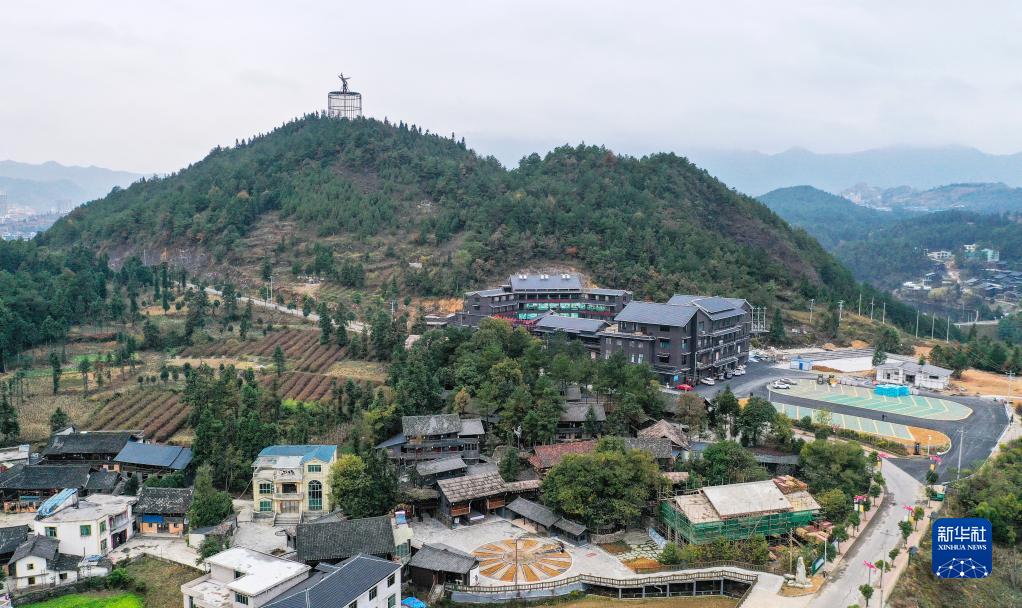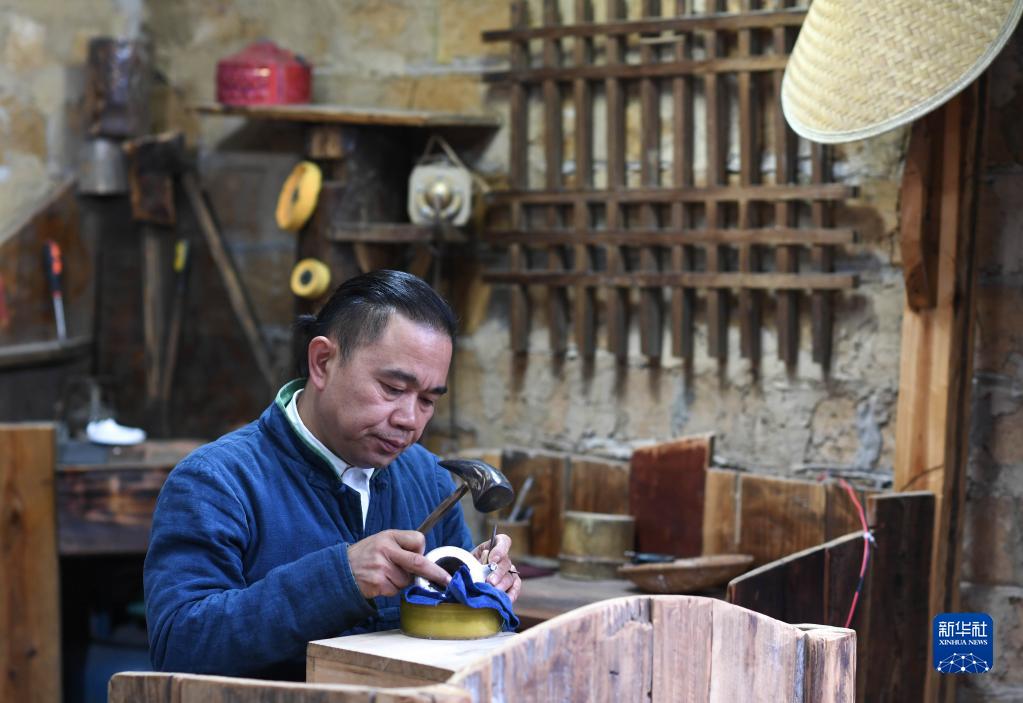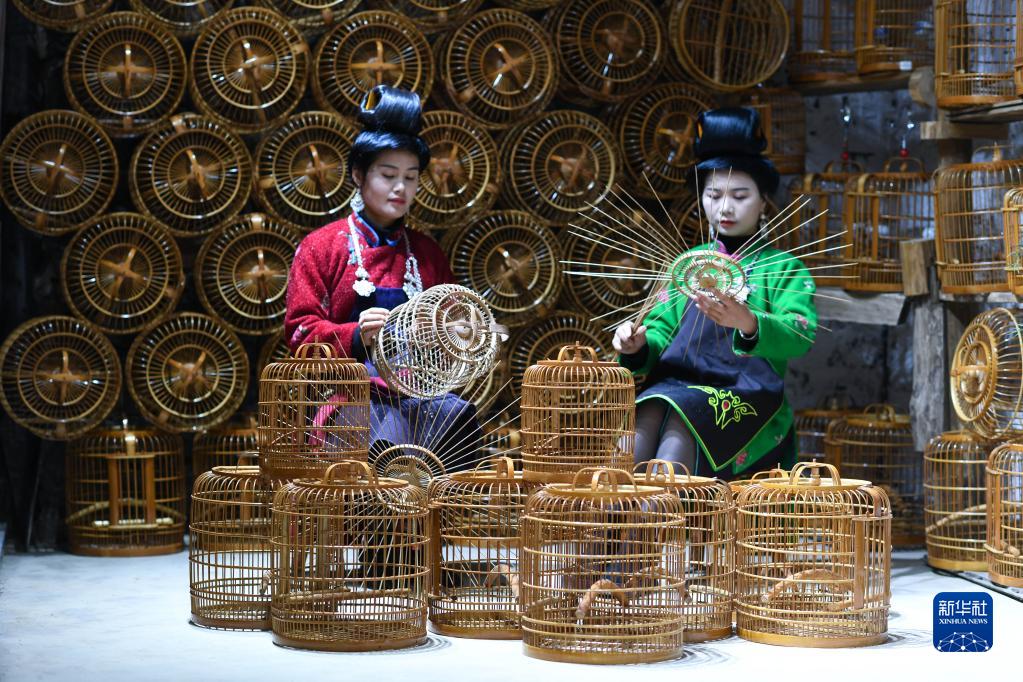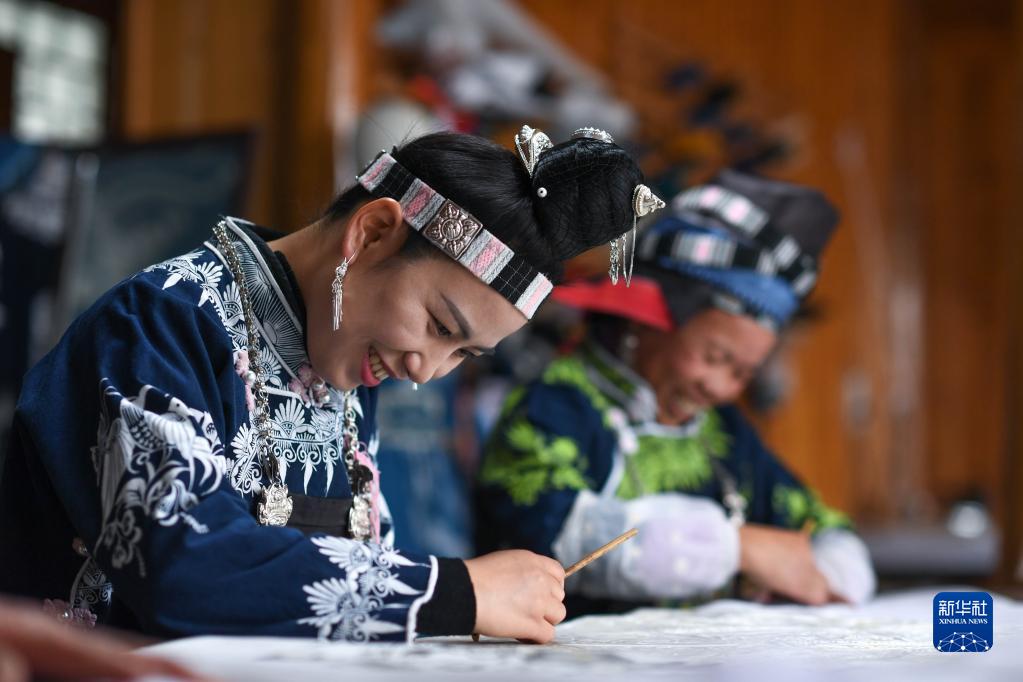Craftsman builds village for intangible cultural heritage items to thrive in SW China's Guizhou
A craftsman has established a silversmiths' village in southwest China’s Guizhou Province for the many intangible cultural heritage items of local ethnic groups. The village has been created to consolidate local traditional skills, knowledge, and cultural items, so that the intangible cultural heritage inherent within them can be preserved and handed down through the generations.

An aerial photo shows Kala village in Danzhai county, Qiandongnan Miao and Dong Autonomous Prefecture of southwest China's Guizhou Province. (Xinhua/Yang Wenbin)
Covering an area of 50 mu (about 3.33 hectares), the silversmiths' village has more than 30 houses that have all been thoughtfully arranged. It sits inside the wider Kala village, Danzhai county, Qiandongnan Miao and Dong autonomous prefecture, Guizhou.
Wang Guochun is a provincial-level inheritor of the silver jewelry making technique of the Miao ethnic group. An “inheritor” is a person who is chosen by the provincial government to be a representative of intangible cultural heritage items, and to commit to the preservation and handing down of knowledge to future generations.
After years of preparation, Wang eventually choose Kala village to locate his base. He says that while he has established his own jewelry business, it is important to focus on local cohesion to carry forward the local knowledge and heritage.
"The silversmith’s village gathers many intangible cultural heritage items, and I want to build it into a cluster of these things to promote cultural integration," Wang said.

Wang Guochun, an inheritor of the silver jewelry making technique of the Miao ethnic group, makes a piece of silver jewelry in Kala village of Danzhai county, Qiandongnan Miao and Dong autonomous prefecture of southwest China's Guizhou Province, on Nov. 16, 2022. (Xinhua/Yang Wenbin)
"Kala village is known for the weaving of bird cages, and in addition it is already near a scenic area with a steady flow of tourists. The local villagers were very supportive of the idea when I told them about it," said Wang.
He kicked off the construction of the village at the beginning of 2019, with the first phase being a research and education base covering several thousand square meters, and the second phase being the village itself, which was completed in May 2022.
"The buildings in the new village are constructed mainly in the traditional styles of local ethnic groups, and they have been innovatively designed and decorated," Wang said.
He purchased 40 buildings that locals no longer needed, broke down the buildings into smaller parts, and transported them to the village. He then rebuilt them using the second hand materials, giving the ancient buildings new life.
"I have cooperated with many vocational schools in the prefecture to promote research and education associated with intangible cultural heritage, including the inheritance of cultural heritage," Wang introduced. He also invited more than 10 additional intangible cultural heritage inheritors to settle there, and has continued to make efforts to promote the village.
Zhang Yiping, 29, is an inheritor of a traditional wax dyeing technique, and has helped dozens of local women engage in the craft.
"Since we entered the village half a year ago, I've taught the wax dyeing technique to more students and tourists and helped more people get to know about these intangible cultural heritage items. I've also managed to increase my income while I’ve been doing it," Zhang said.

Wang Qiu (right), an inheritor of a traditional bird cage weaving technique, works on a bird cage in Kala village of Danzhai county, Qiandongnan Miao and Dong autonomous prefecture of southwest China's Guizhou Province, on Nov. 16, 2022. (Xinhua/Yang Wenbin)
34-year-old Wang Qiu is an inheritor of the bird cage weaving technique from Kala village. In the past, weaving bird cages was the only source of income for her family. After moving into the new village this year, Wang has managed to increase her income through the successful integration of culture and tourism.
Despite the impact from the COVID-19 pandemic, the construction of the village was completed as scheduled. Over the past two years, the village has attracted more than 400,000 students and tourists to experience local intangible cultural heritage items, and provided jobs for more than 100 people.
The village has emerged as a source of income for local craftsmen and women, who have benefited from increased tourist numbers.

Zhang Yiping (left), an inheritor of a traditional wax dyeing technique, draws a wax painting in Kala village of Danzhai county, Qiandongnan Miao and Dong autonomous prefecture of Guizhou Province, on Nov. 16, 2022. (Xinhua/Yang Wenbin)
Photos
Related Stories
- China's traditional tea-making enters UNESCO cultural heritage list
- Cross-Strait intangible cultural heritage exchange event kicks off in Taiwan
- Schools introduce intangible cultural heritage to students in Anyang, central China's Henan
- Internet, digital technologies inject renewed vitality into intangible cultural heritage
- Inheritors of intangible cultural heritage in NW China’s Ningxia create artworks to show support for Beijing 2022
- ICH inheritor in NW China’s Xinjiang integrates local features with paper-pulp sculptures
- Exhibition on intangible cultural heritage opens in Beijing
- Goatskin raft an intangible cultural heritage in Ningxia
- Craftsman strives to bring intangible cultural heritage back to life
- China steps up protection of intangible cultural heritage
Copyright © 2022 People's Daily Online. All Rights Reserved.









